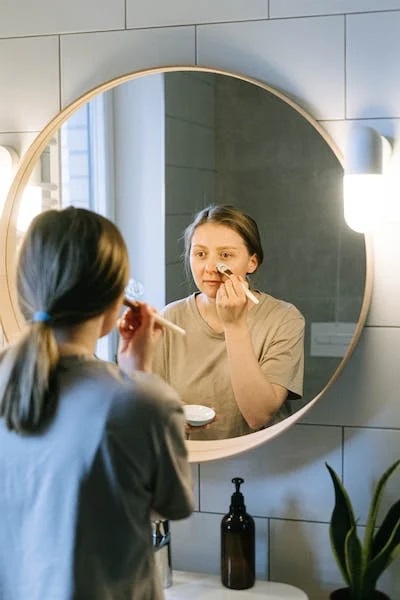
Skincare 101: How to Create a Basic Skincare Routine

4 min read
05 January 2023
Proper skincare is essential for maintaining the health and appearance of your skin. It can help prevent a range of skin concerns, including acne, dryness, and aging. Whether you have dry, oily, or combination skin, there is a skincare routine that can work for you. In this article, we will cover the basics of skincare and how to create a simple yet effective routine for your unique skin type and concerns.
The Importance of Cleansing
Cleansing is an essential step in any skincare routine. It removes excess oil, dirt, and makeup from the skin, helping to prevent clogged pores and breakouts. When choosing a cleanser, look for one that is formulated for your skin type. For example, if you have oily skin, you may want to use a gel or foaming cleanser, while those with dry skin may prefer a cream or oil-based cleanser. It is important to use lukewarm water and be gentle when cleansing the skin, as hot water and rough scrubbing can strip the skin of its natural oils and cause irritation.

Toning and Exfoliating
Toning helps to balance the pH of the skin and can help to tighten and firm the skin. It can also help to remove any remaining traces of dirt or makeup that your cleanser may have missed. There are many different toners available, each with their own unique benefits. For example, some toners contain glycolic acid, which can help to exfoliate the skin and improve the appearance of fine lines and wrinkles. Other toners contain ingredients like aloe vera or rose water, which can help to soothe and hydrate the skin.
Exfoliating is another important step in a skincare routine. It helps to remove dead skin cells from the surface of the skin, revealing brighter, smoother skin underneath. There are two main types of exfoliants: physical exfoliants, which use scrubbing particles to slough off dead skin cells, and chemical exfoliants, which use ingredients like alpha-hydroxy acids (AHAs) or beta-hydroxy acids (BHAs) to dissolve the bonds between dead skin cells. It is important to use exfoliants in moderation, as over-exfoliating can damage the skin and lead to irritation.
Moisturizing and Protecting
Moisturizing helps to hydrate and nourish the skin, keeping it soft and supple. It is important to use a moisturizer that is formulated for your skin type. For example, those with oily skin may prefer a lightweight, oil-free moisturizer, while those with dry skin may benefit from a thicker, creamier moisturizer. Don't forget to moisturize your neck and décolletage, as these areas are often overlooked but can show signs of aging just like the face.
In addition to moisturizing, it is important to protect your skin from the sun. UV radiation from the sun can damage the skin, leading to premature aging, dark spots, and even skin cancer. Be sure to use a broad-spectrum sunscreen with an SPF of at least 30 every day, even on cloudy days. Apply sunscreen to all exposed areas of the skin, including the face, neck, ears, and hands.
Customizing Your Skincare Routine
In addition to the basic steps outlined above, there are many other products and treatments that you can incorporate into your skincare routine depending on your specific skin concerns.
Conclusion
In a nutshell, you now know everything about the basics of skincare. Cleanse and moisturize your face as needed, use anti-bacterial products from time to time, and add in some face masks when necessary. Now it’s time for you to start a skincare routine that nurtures your skin.
Here at My Beauty Diary, we offer the best natural and ayurvedic products that are safe for sensitive skin too! Head on over to our website today and get yours tailored just for you!
In case you have found a mistake in the text, please send a message to the author by selecting the mistake and pressing Ctrl-Enter.

No comments yet